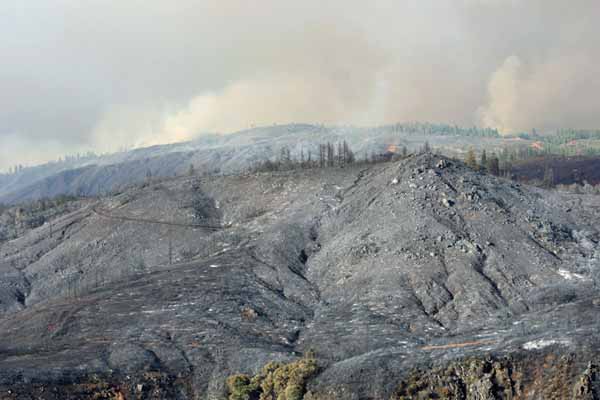
Recent research in the Rocky Mountains has found what others also determined in a 2013 study in Oregon — significant decreases in post-fire tree regeneration. In a paper titled “Evidence for declining forest resilience to wildfires under climate change”, eight researchers noted reductions in tree regeneration in the 21st century.
Below are some excerpts:
Annual moisture deficits were significantly greater from 2000 to 2015 as compared to 1985–1999, suggesting increasingly unfavourable post-fire growing conditions, corresponding to significantly lower seedling densities and increased regeneration failure. Dry forests that already occur at the edge of their climatic tolerance are most prone to conversion to non-forests after wildfires. Major climate-induced reduction in forest density and extent has important consequences for a myriad of ecosystem services now and in the future.
http://wildfiretoday.com/2018/04/05/more-research-indicates-some-forests-are-not-growing-back-after-wildfires/Climate change is already affecting multiple ecosystem properties, leading to shifts in species composition and state changes (Walther et al. 2002; Donato et al. 2016). In the US Rocky Mountains, we documented a significant trend of reduced post-fire tree regeneration, even over the relatively short period of 23 years covered in this analysis. Our findings are consistent with the expectation of reduced resilience of forest ecosystems to the combined impacts of climate warming and wildfire activity. Our results suggest that predicted shifts from forest to non-forested vegetation (e.g. Bell et al. 2014) may be underway, expedited by fire disturbances (Kemp 2015; Donato et al. 2016; Harvey et al. 2016; Johnstone et al. 2016; Rother & Veblen 2016).
Regeneration failures, as measured by both seedling presence/absence and regeneration thresholds, occurred across all forest types (Figs 3 and 4d). Low-elevation forests, dominated by tree species near the warm, dry edge of their climatic tolerance may be particularly vulnerable to shifts to non-forest vegetation, because of the absence of any tree species that could reestablish under warmer, drier conditions (Harvey et al. 2016). Meanwhile, moist forest types may experience a shift in species dominance and a decrease in tree density. And while only 15% of the moist forest sites we studied lacked seedling after 21st-century fires, 35% of these sites did not meet the recruitment threshold. This represents a substantial increase (300%) relative to the 1985–1999 period, highlighting the impacts of warming in moist forests as well.
Bagikan Berita Ini














0 Response to "More research indicates some forests are not growing back after wildfires"
Post a Comment